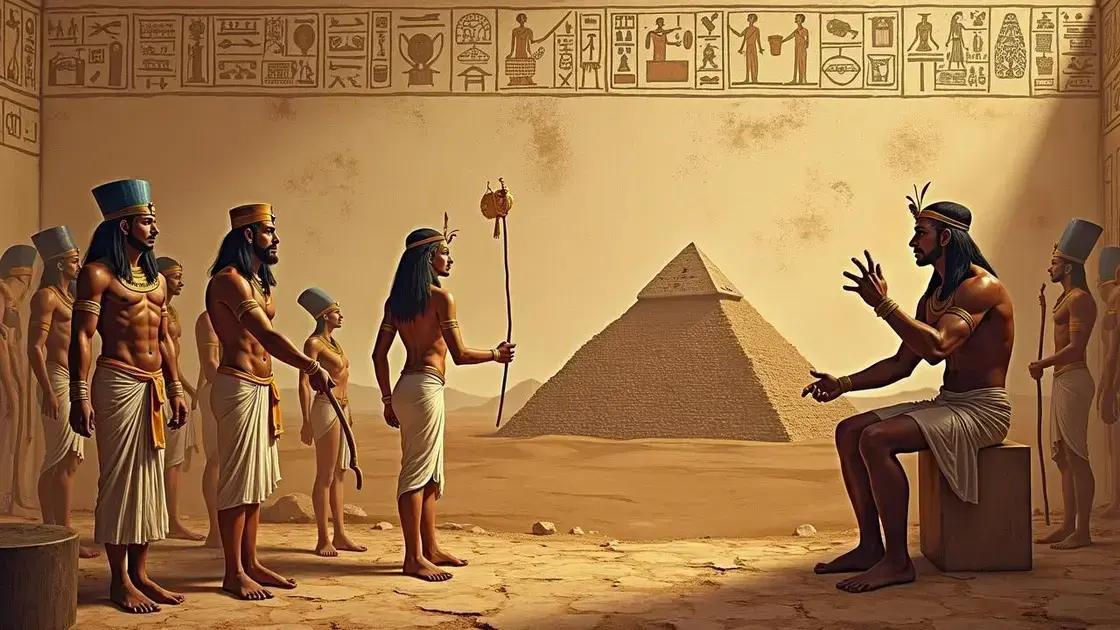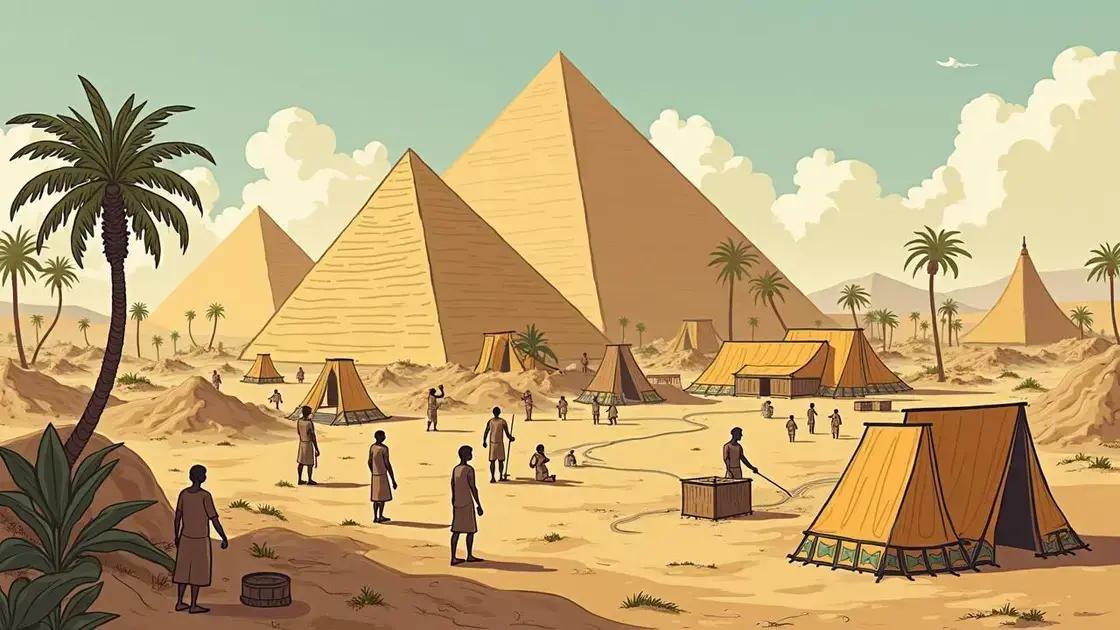Are there risks with the Trick of the Egyptians? Yes, ancient Egyptian practices included various tricks like rituals and magic, which sometimes led to superstitions, health risks, exploitation, and negative social implications, highlighting the importance of understanding these historical customs and their potential consequences.
Are there risks with the Trick of the Egyptians? Exploring the ancient practices of Egypt reveals fascinating insights into their customs and beliefs. From the use of rituals to unique artifacts, these elements may introduce unforeseen consequences in today’s context. In this article, we will unravel the intricacies of Egyptian tricks and consider both their historical significance and the potential risks associated with them.
Understanding the Egyptians’ Tricks

Understanding the Egyptians’ Tricks involves diving into their ancient culture, customs, and beliefs. The Egyptians used a variety of tricks and techniques to achieve their goals, whether they were related to daily life, magic, or architecture.
Magic and Rituals
Magic was an integral part of ancient Egyptian life. They believed that words and actions could influence the world around them. Rituals were performed to honor their gods and ensure balance in their lives. For example, the Book of the Dead included spells meant to guide the deceased through the afterlife, showcasing the importance of magic.
Architectural Marvels
The construction of the pyramids and temples also showcased Egyptian ingenuity and tricks. They used precise knowledge of mathematics and engineering to accomplish feats that still amaze modern architects. The alignments of these structures with celestial bodies were not mere coincidences; they demonstrated the Egyptians’ awareness of the cosmos.
Symbolism and Hieroglyphics
Hieroglyphics served as another trick of the Egyptians. These intricate symbols conveyed stories, beliefs, and laws. The ability to read and write these symbols was reserved for the elite, illustrating the power dynamics in society. Each symbol held significant meaning and could encapsulate complex ideas.
Daily Life and Superstitions
Everyday life in ancient Egypt was also filled with tricks, especially superstitions and omens. Many Egyptians relied on signs from the gods to guide their actions, whether in farming, medicine, or relationships. For instance, the appearance of certain animals could be seen as a divine message urging caution or action.
Potential Risks of Ancient Egyptian Practices

Potential risks of ancient Egyptian practices can be traced back to their beliefs and rituals. These practices, while fascinating, sometimes had serious implications for those involved.
Superstitions and Misinterpretation
The Egyptians held many superstitions that influenced daily life. These beliefs often led people to make decisions based on fears or misunderstandings. For instance, seeing certain animals as omens could lead individuals to avoid potentially beneficial activities or to act against their better judgment.
Health Risks from Rituals
Some ancient practices, such as mummification, involved using various chemicals and materials that could pose health risks. For example, the use of natron, a naturally occurring salt, was vital in preservation but can be harmful in large amounts. This raises concerns about the safety of those performing these rituals.
Strain on Resources
The construction of large monuments, like the pyramids, required immense manpower and resources. This could lead to potential neglect of the local population’s needs. Such projects placed heavy burdens on workers and often resulted in poor living conditions for many.
Potential for Exploitation
The social hierarchy in ancient Egypt meant that some people exploited others. Wealthy elites could manipulate rituals and magical practices for personal gain, leading to injustice. This system created vulnerabilities for those who were less powerful.
Consequences of Magic Practices
Depending on magic to solve problems could lead to inaction. If an individual believed that a spell alone would protect them, they might ignore personal safety measures or preparations. This reliance on magic might have severe consequences in emergencies.
Reflecting on the Risks and Insights of Ancient Egyptian Practices
After examining the various aspects of ancient Egyptian tricks and their potential risks, it becomes clear that their customs, while innovative, carried inherent dangers. From the reliance on superstitions to the health risks associated with specific rituals, understanding these practices offers valuable lessons.
The intricate balance between their beliefs and realities reveals fascinating insights into their culture. It becomes essential to appreciate these historical practices within their context while recognizing the consequences they may have had on society.
Ultimately, the exploration of ancient Egyptian practices not only enriches our knowledge of history but also prompts us to consider the implications of our own beliefs and customs in the present day.
FAQ – Frequently Asked Questions about the Risks with the Trick of the Egyptians
What are the main tricks used by the Egyptians?
The Egyptians employed various tricks, including rituals, magical practices, and engineering marvels like pyramid construction, to achieve their goals.
What are the health risks associated with ancient Egyptian practices?
Certain practices, such as mummification, involved chemicals like natron, which could be harmful in large amounts, posing health risks to those involved.
How did superstitions affect daily life in ancient Egypt?
Superstitions often influenced decision-making, leading individuals to avoid beneficial activities or make choices based on fear rather than facts.
What social implications arose from the ancient Egyptian hierarchy?
The social hierarchy allowed the elite to exploit less powerful groups, manipulating rituals for personal gain and causing injustices within society.
Can reliance on magic lead to negative consequences?
Yes, depending solely on magic for protection or solutions can result in inaction, as individuals may neglect essential safety measures.
What lessons can modern society learn from ancient Egyptian practices?
Understanding the strengths and risks of these historical practices can prompt reflection on our own beliefs and traditions, helping us make informed decisions.












